Features of window decoration with tulle
Correctly chosen tulle will become a special accent of the interior or a neutral background for decorative items. It is distinguished by transparency, smooth or openwork texture of neutral or bright color.
Tulle simultaneously protects the room from sunlight and transmits it, while diffusing it, which brings an airy and cozy atmosphere to the interior. Light fabric drapes well and holds a given shape.
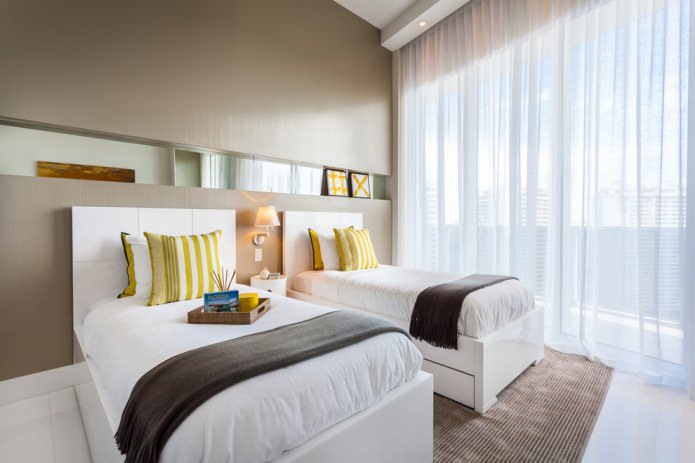
The photo shows an example of a bedroom where there is no cornice and the curtain falls from the niche. This option is suitable for a small room with a wide window.
Rules for choosing tulle:
- Tulle and curtains in the interior should be contrasting or complement each other, differing in shades. If there is a pattern on the curtains, then the tulle should repeat it, or remain neutral;
- It should be selected to match the style and color of the interior, taking into account whether the emphasis will be on the window, or it will become a background for other interior items;
- If there is no connection to a specific interior style, then a win-win choice will be tulle in neutral beige and white shades without a prominent pattern;
- When custom-made, you need to take into account the features of the fabric, its shrinkage during sewing, and then washing, it is best to select curtains from a photo;
- When choosing natural tulle, you should remember that fabric with the addition of polyester wrinkles less. It is worth paying attention to the fact that the material is impregnated with a special antistatic and dirt-repellent agent, especially if the textile will be used in the kitchen.
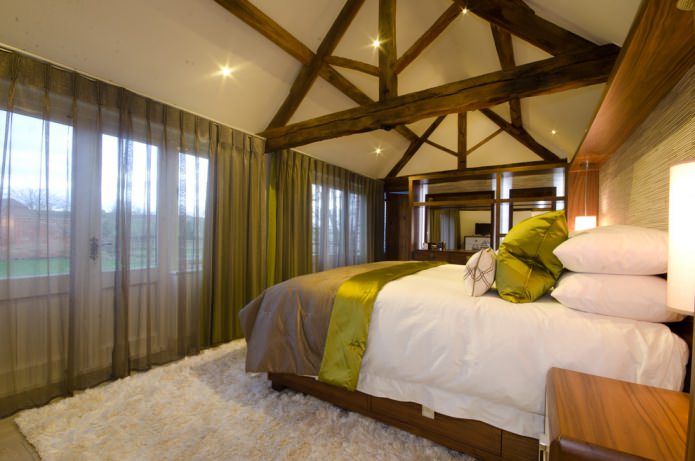
Types of tulle
Tulle adds spaciousness to a small space, masks an uneven window opening, creates a play of rays and light. Textile production offers a large selection of tulle by texture, which can be divided into smooth, openwork and mesh.
- Standard tulle without large patterns can be made of cotton, organza. It is distinguished by the simplicity of the design, the possibility of use with curtains. It is better to wash it by hand, after soaking it, without wringing it out, with a light squeeze. Iron it on a delicate setting through a cloth or damp gauze.
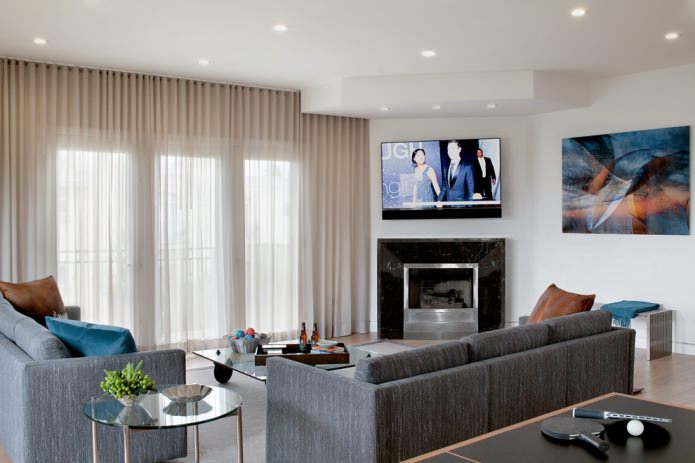
The photo shows beige plain tulle, which in a light shade suits the interior without a pronounced accent on a specific color.
- The mesh differs in the size of the cells and is the background for the curtains. It can be made of thin or thick thread weaves. It is not recommended to use it on its own, as such tulle does not protect the room from the sun.
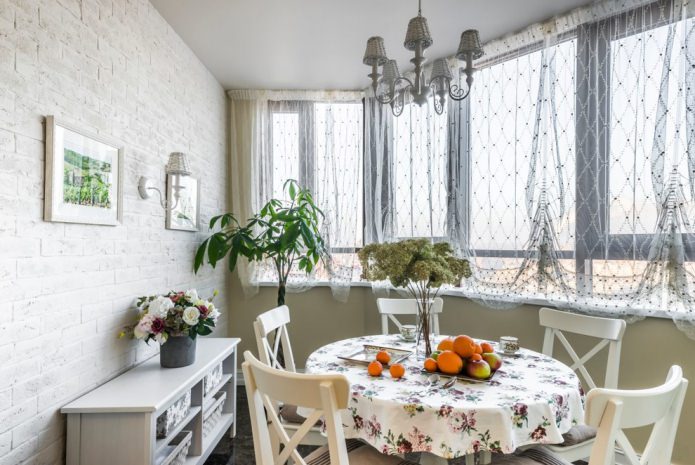
- Embroidered tulle is often found in photos in interiors. The embroidery can be of any size, for which metallic or silk threads are used. Complex patterns, gold monograms on a cream background are suitable for classics, floral colored embroidery is suitable for country style, and for minimalism and modern style it is better to use embroidery with lines and simple geometry. Embroidered patterns can be simple and elegant, as in the photo example.
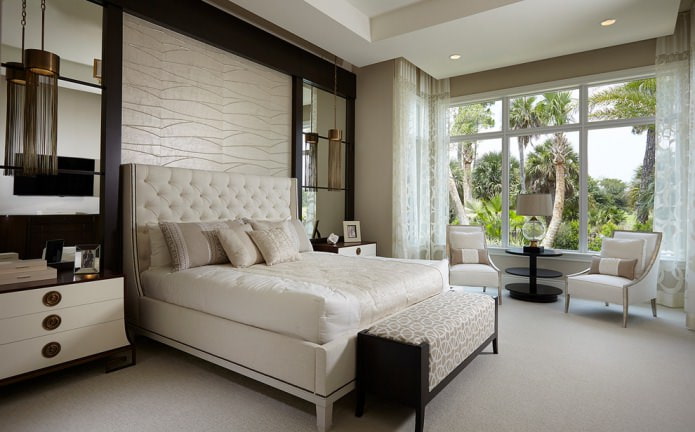
- Tulle can be vertically or horizontally striped, which corrects the perception of space, making it higher or wider. Narrow or wide stripes can be single-color or combined. The stripes can be inserted satin or embroidered.
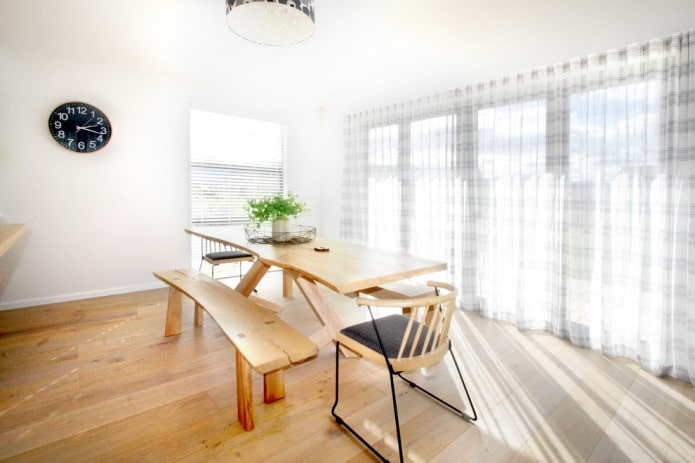
The photo shows tulle with horizontal large and small stripes, which make the space wider and the interior interesting.
- The web consists of interweaving silk and synthetic threads, looks weightless, but at the same time is quite durable, does not require ironing. The web can be embroidered and can be used both independently and in combination with curtains.

- Muslin, noodles or thread curtains can be of different thickness, with or without bead decor. They shade the room well, are easy to drape, do not wrinkle, and are convenient for decorating the door to the loggia. They are suitable for modern interiors and are used as a partition for different zones within one room. They can also be combined with blinds, as in the photo.

- The pattern on the tulle can be embroidered, punched, sewn. Jacquard pattern, curls, tulle with flowers are suitable for a classic style. Geometry and lines look good against the background of neutral curtains in a modern interior. The pattern can repeat the pattern of the wallpaper, as in the photo.
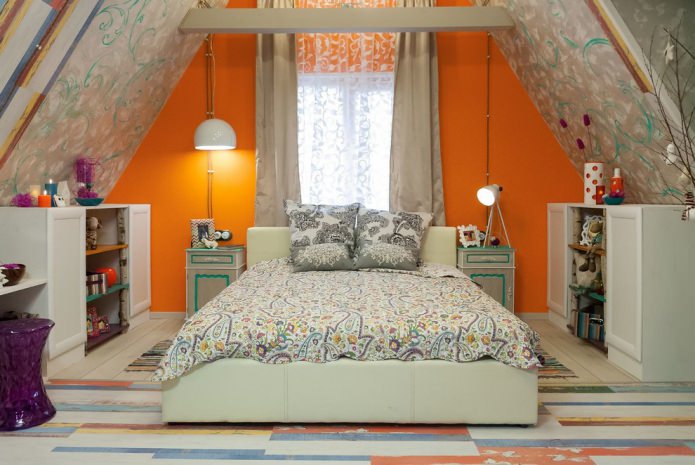
- Rain tulle is so called because of the dense thread woven into the plain fabric, which resembles rain. It attracts attention, but at the same time remains neutral, suitable for a rich interior, where you need to calm the general background. It can be of one color, with a vertical or horizontal gradient.
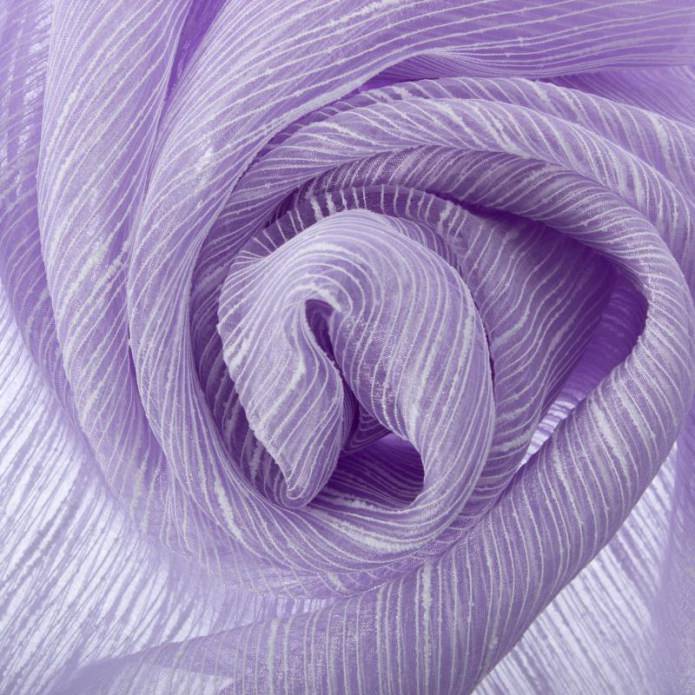
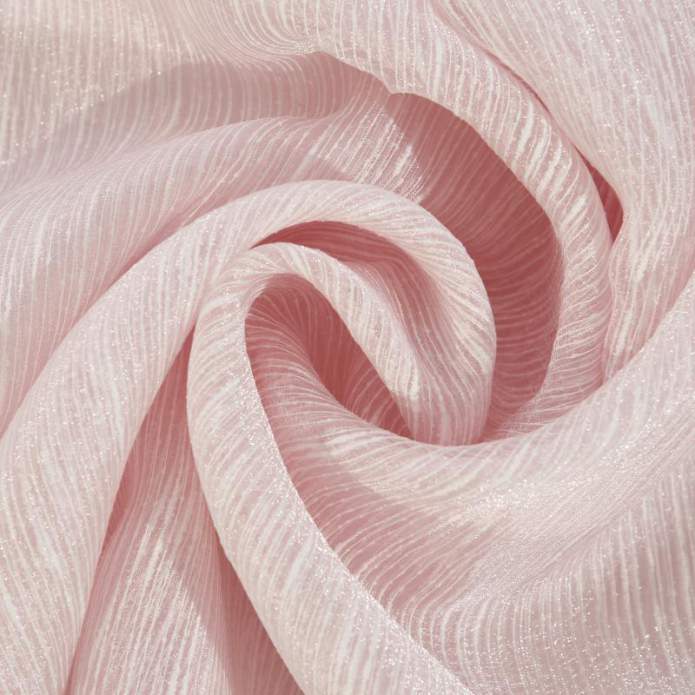
- Floral tulle is suitable for country and Provence styles. The size of the floral pattern should not conflict with the size of the tulle. Bright flowers look good against a neutral background of walls, lush drapery is inappropriate because the pattern will not be visible.
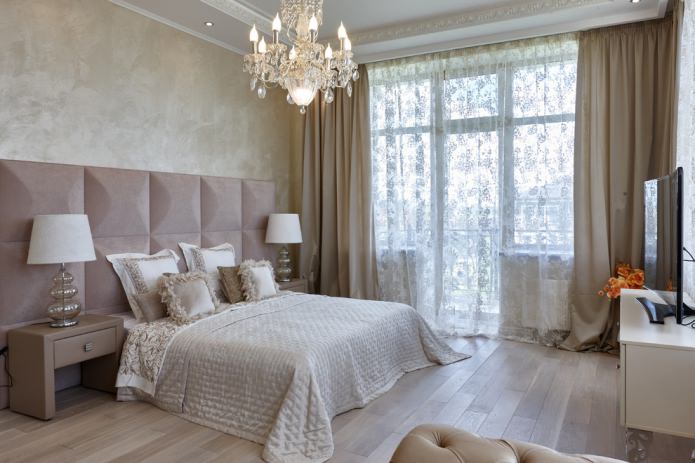
The photo shows a bedroom in a modern style, where the floral pattern is the object of attention. Embroidery with beige threads on light organza looks modest and at the same time luxurious.
- Lace tulle is most often used for the interior of the bedroom, terrace and living room. The lace on the veil can be sewn, embroidered and bobbin. The fabric can be completely lace or with inserts. They create coziness, let in light and protect from prying eyes.
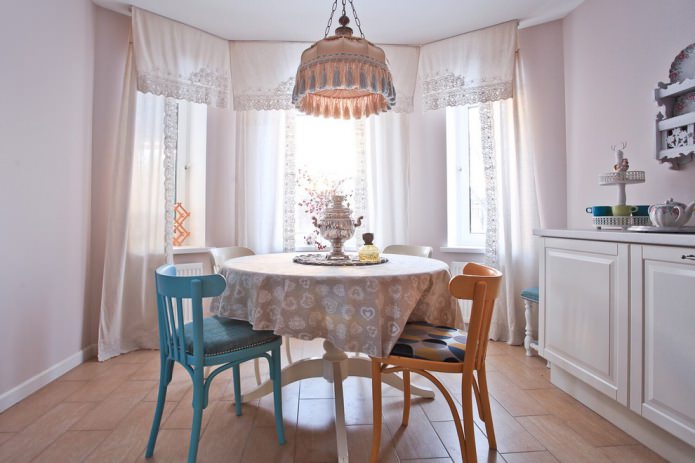
- Pleated tulle is similar to crinkle, it can be used independently, does not wrinkle, has high plasticity. Lets in light but blocks the sun’s rays, so it’s suitable for windows on the south side.
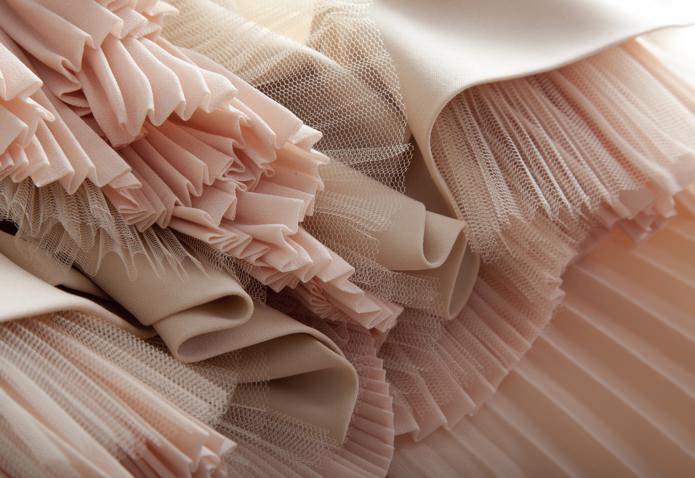
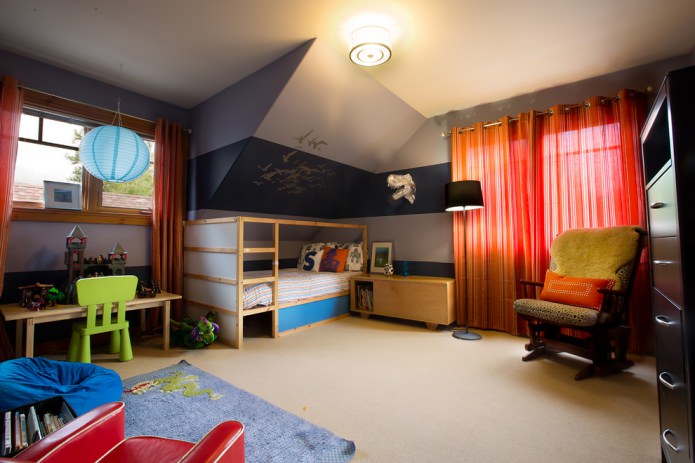
The photo shows curtains with eyelet fastening in a children’s room. A bright, flowing color fills the room with rich colors.
Choice of color
White
Most often, pure white tulle, milky or ivory shades are used for interiors. It creates a light atmosphere, is suitable for small apartments, leaves the window visible and at the same time frames it well.
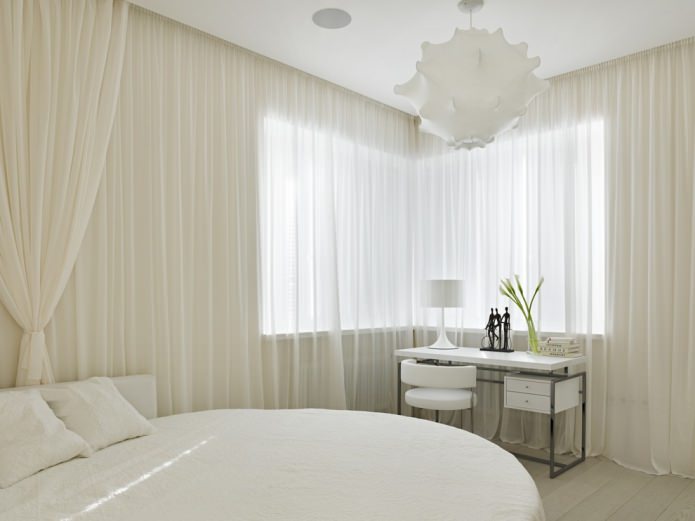
Gray
Gray is a neutral color and creates a veil effect. A dark shade is suitable for a large room, and a light one for a small one. The practicality of the color can be seen in the photo.
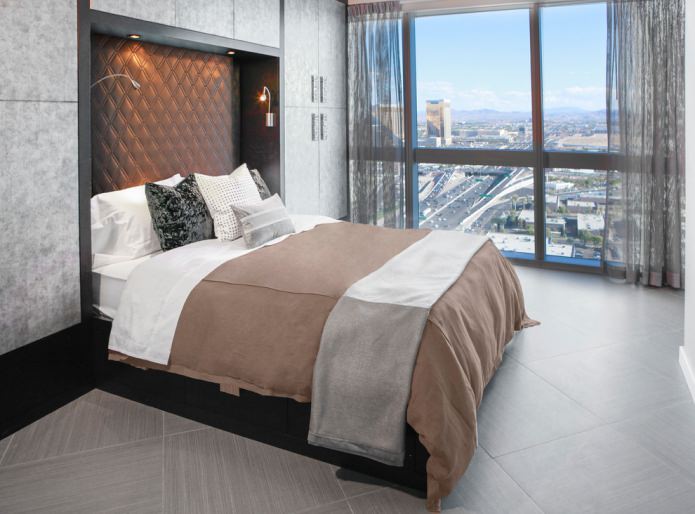
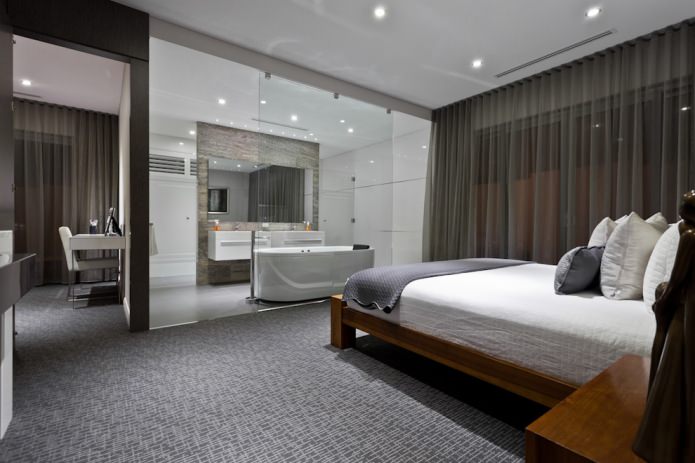
Black
You need to be careful with black, for example in combination with white or light finishing of the floor, ceiling or walls, an example in the photo.
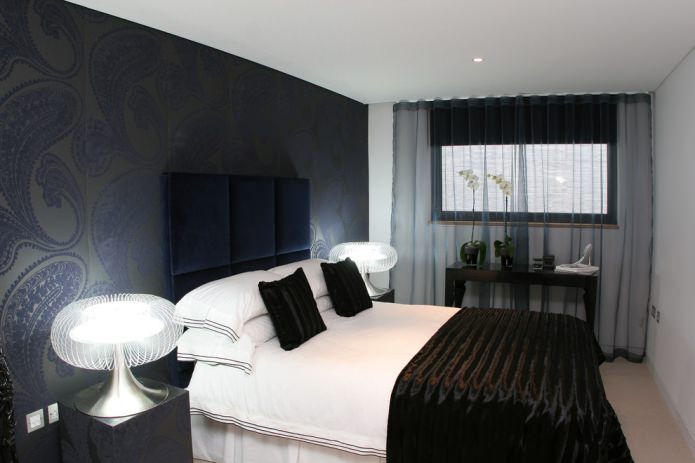
Brown
Brown in a chocolate shade will be combined with milky curtains. It has a good effect on creating coziness in the apartment.

Beige
Beige and champagne colors are suitable for a multi-colored interior, combine with any shades, make the room bright.
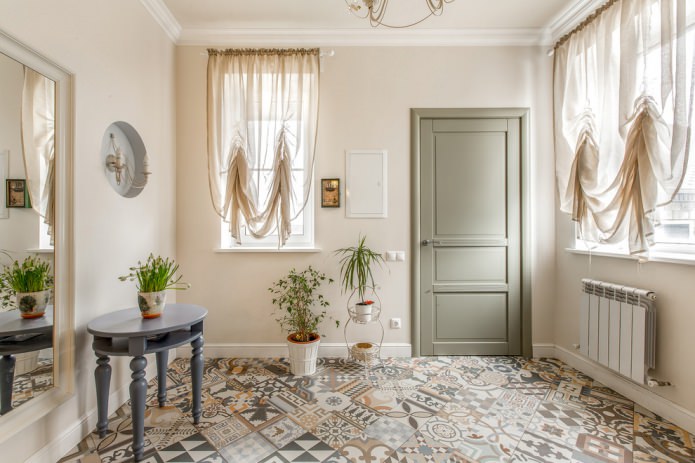
The photo shows French tulle curtains in the hallway. The beige translucent color matches the color of the tile pattern.
Red
Red attracts attention, creates an accent and does not need to be complemented. It is important that the red tulle resonates with a decorative item, such as a carpet or a figurine.
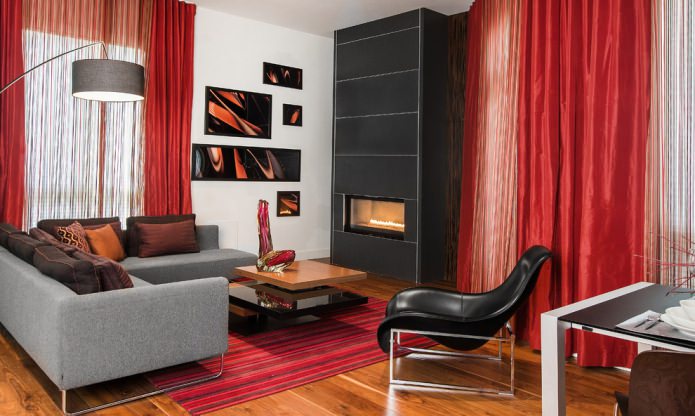
The photo shows an example of a modern interior in red that looks stylish. Light walls and a light gray sofa balance the red and black colors.
Yellow
Yellow is intended for dimly lit or cool rooms. This tulle goes well with brown, white and blue curtains.
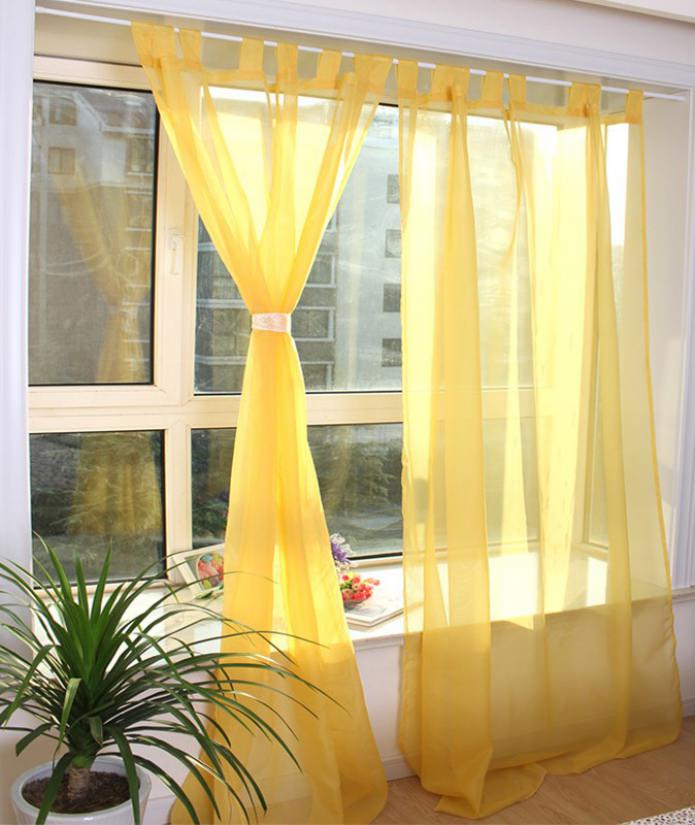
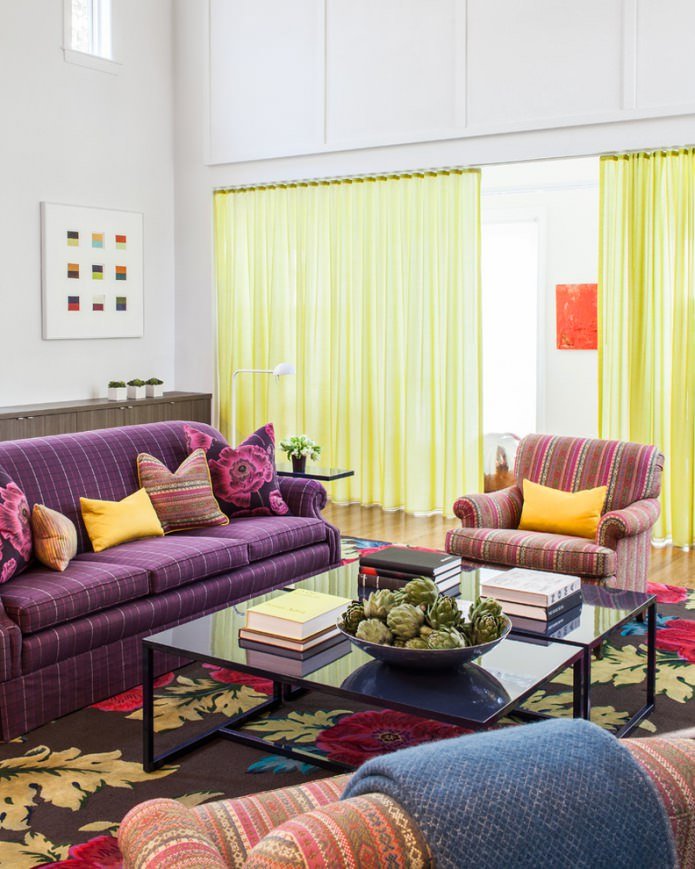
Orange
Orange, like yellow, will warm up the interior and favorably emphasize the role of the window in the room. It looks good in the kitchen, hall and bedroom. Emphasizes activity and positive mood.
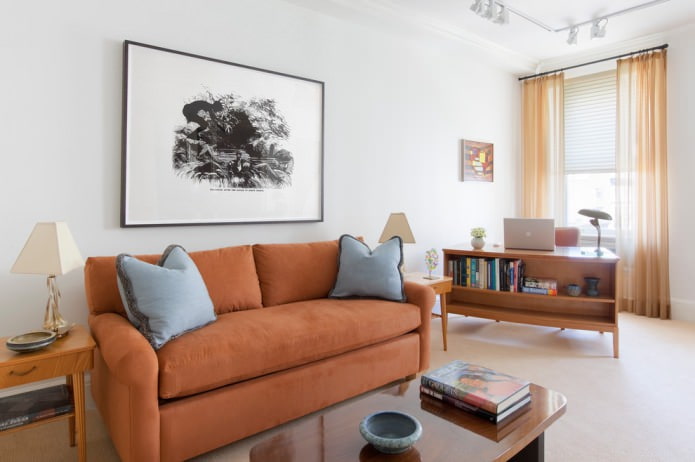
Gold
Gold, like white, is a classic for tulle. Best suited for a classic living room and bedroom, combined with white, black, burgundy.
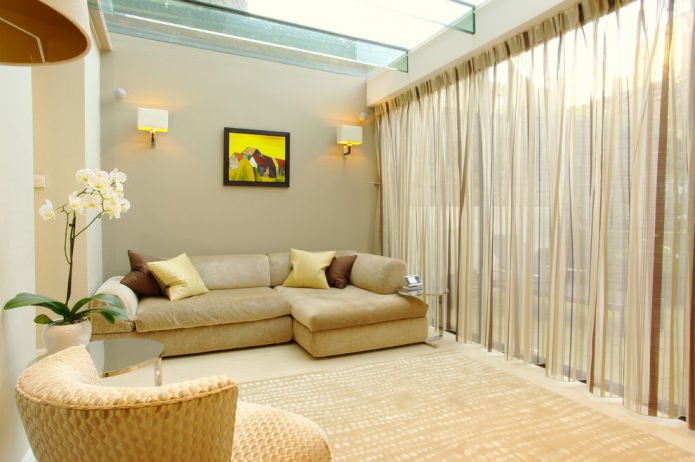
Pink
Pastel pink will emphasize the tenderness of the bedroom or nursery, can be combined with light gray furniture and white wallpaper. Curtains with different shades of pink also look good, as in the photo.

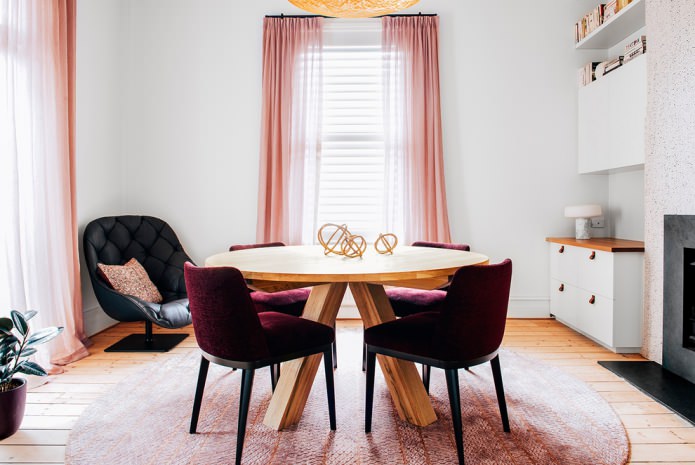
Blue, blue
Blue and blue tulle will cool a hot room, no need to combine with dark curtains. The color of the walls can be beige, white, light blue, yellow.
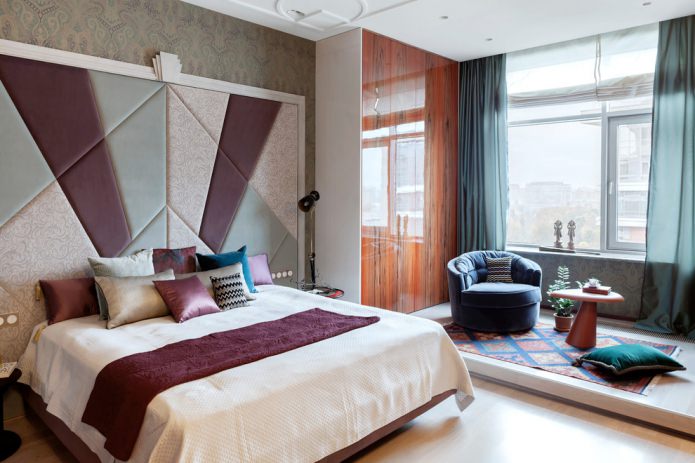
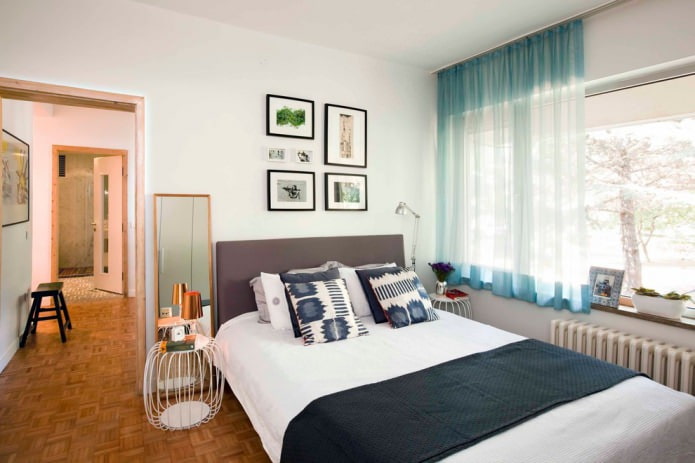
Turquoise, green
Turquoise and green relax, set the mood for rest, suitable for the bedroom and living room. Mint shades are refreshing and go well with yellow, red and white walls.

The photo shows an interior where translucent turquoise organza is combined with grey curtains and acts as a bright accent.

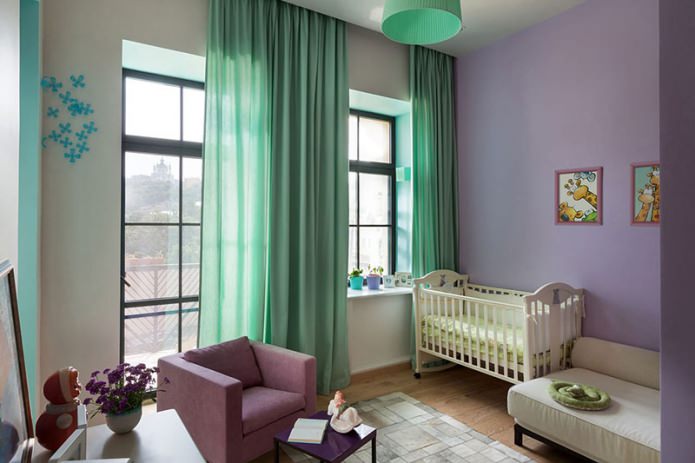
Lilac, purple
Lilac and purple will emphasize the dynamism of the interior, which will always look fresh and interesting for guests. It can be with white or black embroidery.
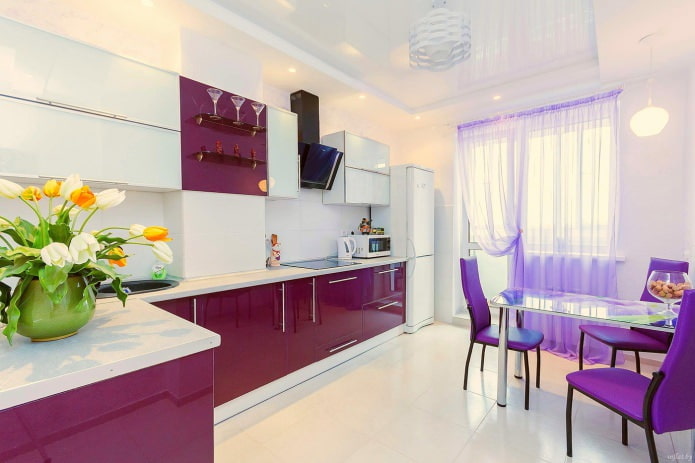
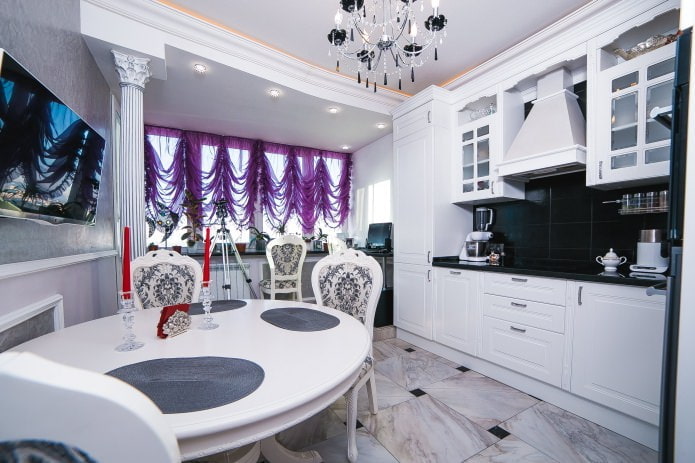
Combination with other types of curtains
Tulle can be used as an independent decorative element, or it can be combined with another type of curtains for greater darkening.
Curtain and tulle
Curtain and tulle are often found on the same cornice in any interior style. They can be plain or multi-colored. With such a combination, the pattern should be on only one item, or the pattern should match. You should not combine curtains made of natural fabric, such as linen, and organza tulle.

Roller blind and tulle
They are combined if the tulle is transparent or covers half the window, and its length does not matter. When rolled up, the roll will not be visible.
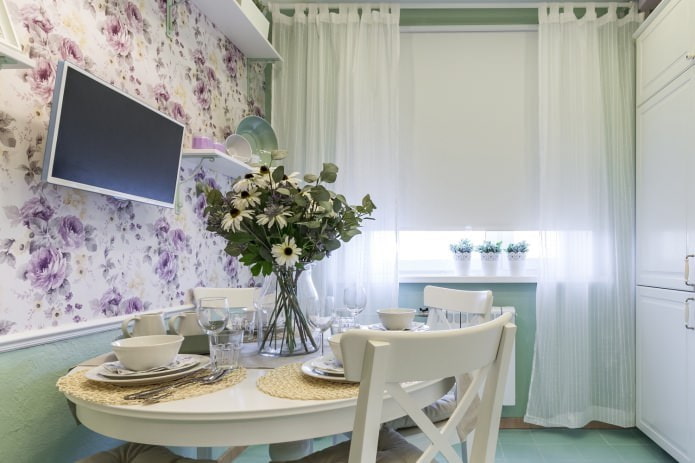
Roman blind and tulle
Roman blinds and tulle are suitable for a modern living room, children’s room or bedroom. It is better to attach it to the sash or in the opening. The color of the Roman blinds can be the same or contrasting.
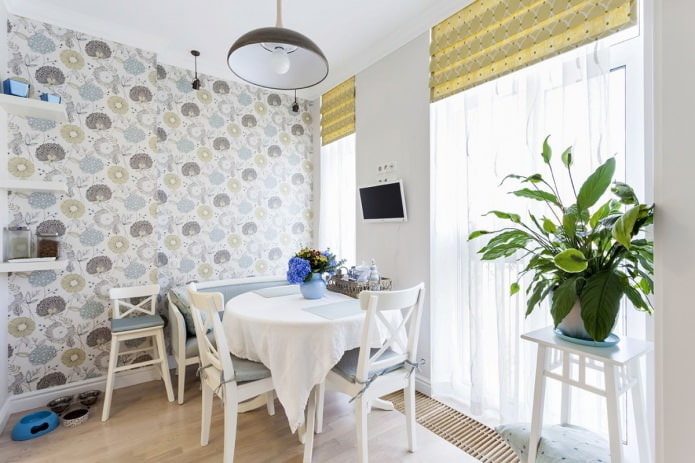
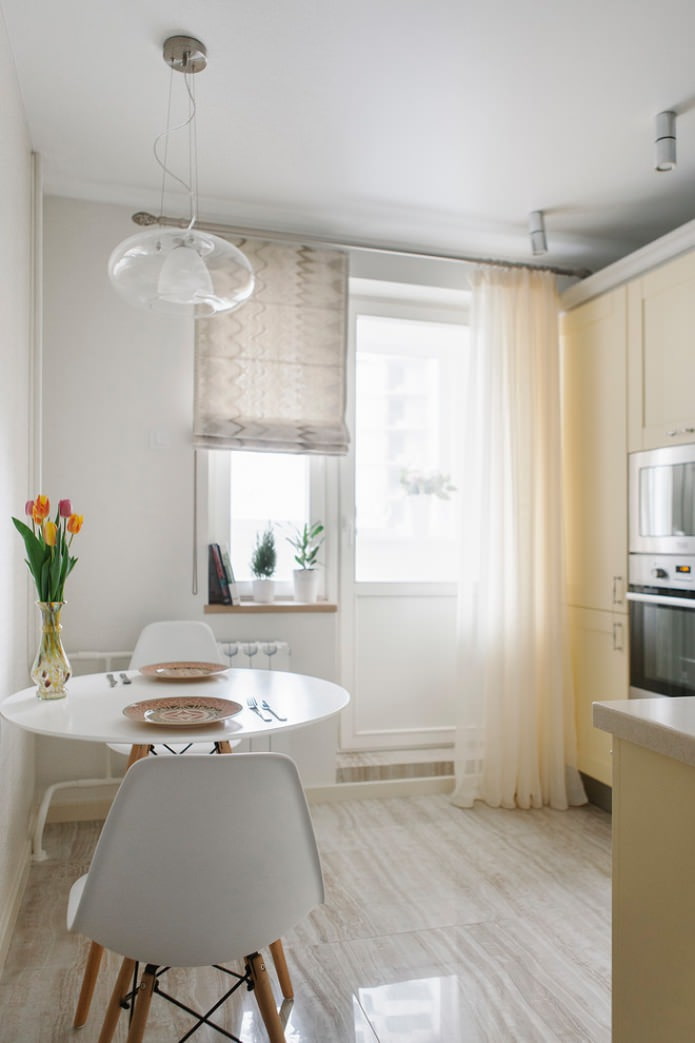
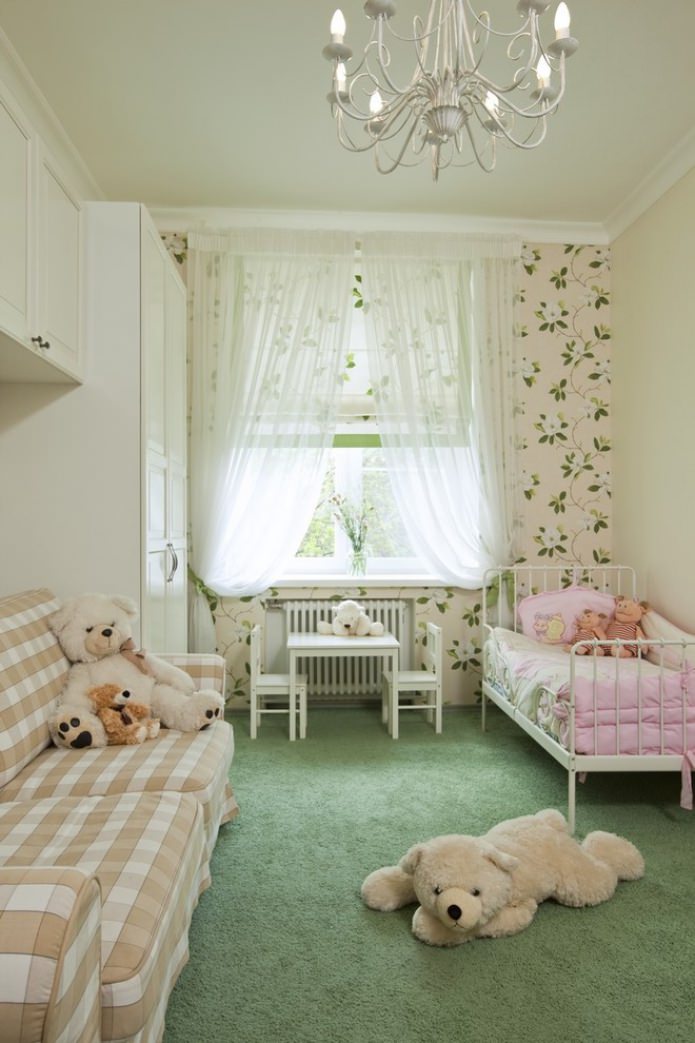
On The photo on the right is an example of how harmoniously the interior looks when the curtain pattern matches the wallpaper. Transparent tulle frames the window with light drapery.
Thread curtain and tulle
Thread curtains and tulle can be combined, provided that they are of different colors, while the thread curtains should be thick, and the tulle should be openwork or translucent.

Style solution
Universal window decor allows you to emphasize any interior style.
Modern style
A solid color tulle, striped, with a little embroidery is suitable for a modern interior. The color does not matter, but it should be appropriate in the decor. Simple lines, clear fabric without asymmetry are welcome in a modern style.
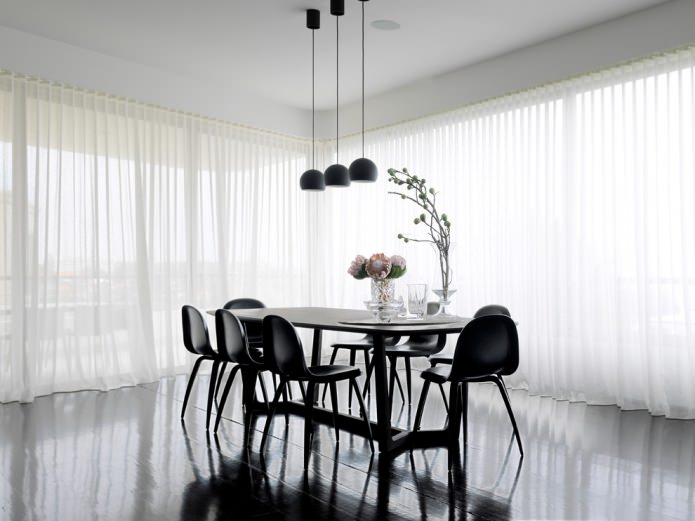
Classic style
The classic interior is in the constancy and combination of heavy brocade or velvet curtains with light patterned muslin of beige or white color, as well as a soft lambrequin or throws with fringe and tassels. When sewing, it is important to take into account that the tulle does not reach the floor by 2 cm, and the curtains slightly touch it.
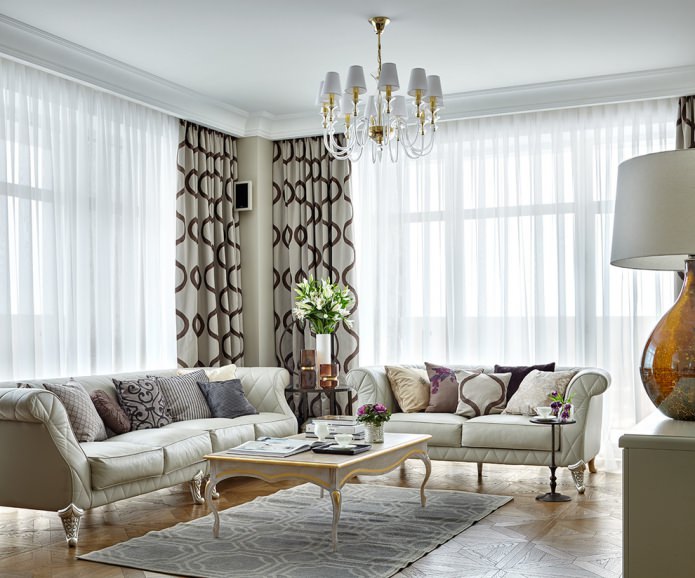
The photo shows a classic interior, where the curtains are attached to a closed baguette. Fastening with tape ensures frequent draping of the fabric.
Provence
A light texture of fabric is suitable for Provence, which can be easily draped in lush folds on the sides of the window. Mesh, tulle with embroidery, with a floral pattern will do. The length can be any, depending on the interior and the size of the room.
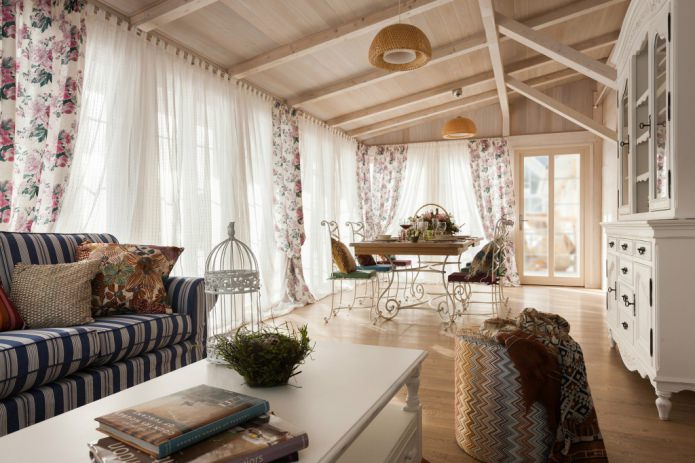
Scandinavian style
Scandinavian interior does not imply the use of heavy curtains, so white muslin without openwork of a simple cut will do here. It can also be combined with a roller blind.
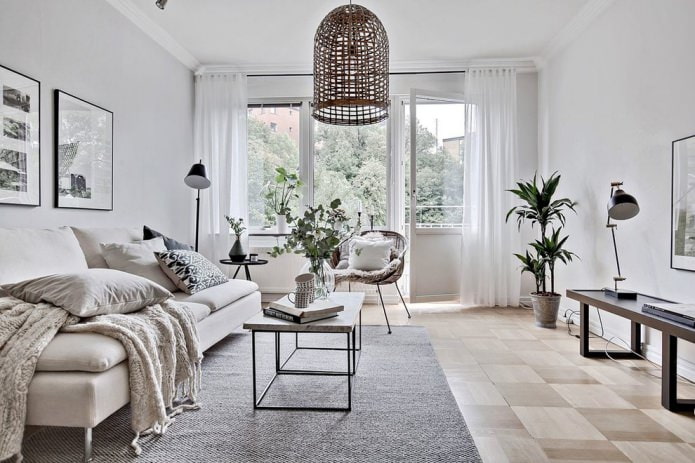
Tulle in the living room, kitchen, bedroom and children’s room
You can change the appearance of the room by changing only the textiles.
Living room
Organza, noodles, openwork tulle are suitable for the living room. The length is preferably to the floor, and the method of fastening depends on the desired drapery. Embroidery or custom photo printing on polyester based on a selected photo also looks good.
White and beige colors, lace, which go equally well with dark and light furniture, are suitable for a classic living room interior.
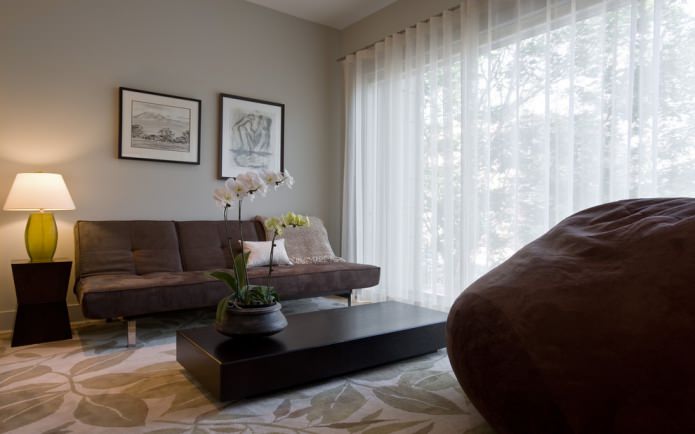

The photo shows a combination of transparent Roman blinds, tulle and curtains with grabs on the bay window, where the tulle draws the border between the windows.
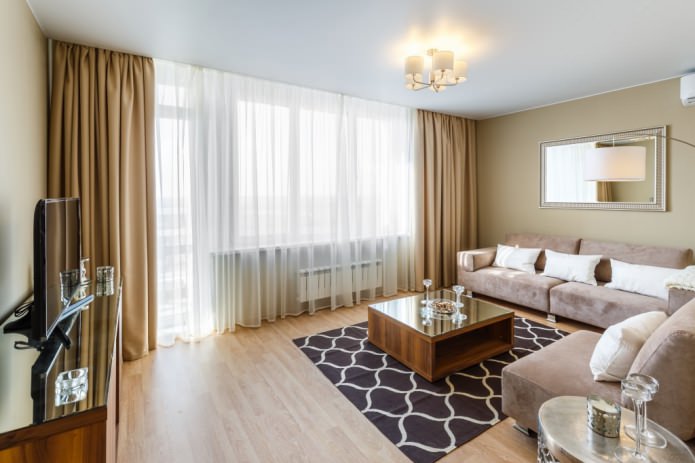
Kitchen
Medium-length curtains are suitable for the kitchen. Here it is important to choose a synthetic blended fabric that will not catch fire, wrinkle or fade after frequent washing.
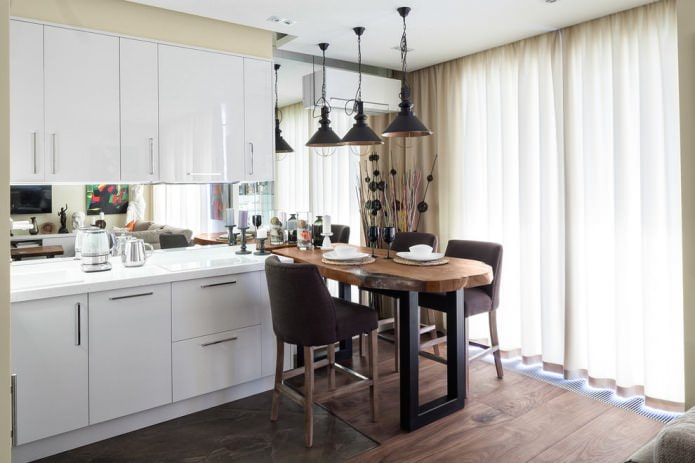
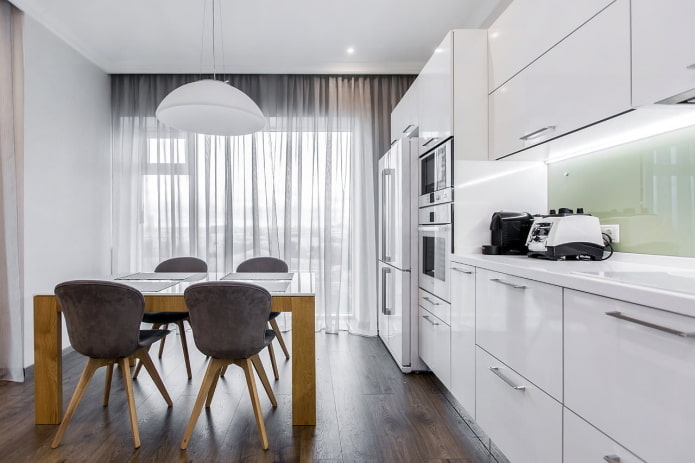
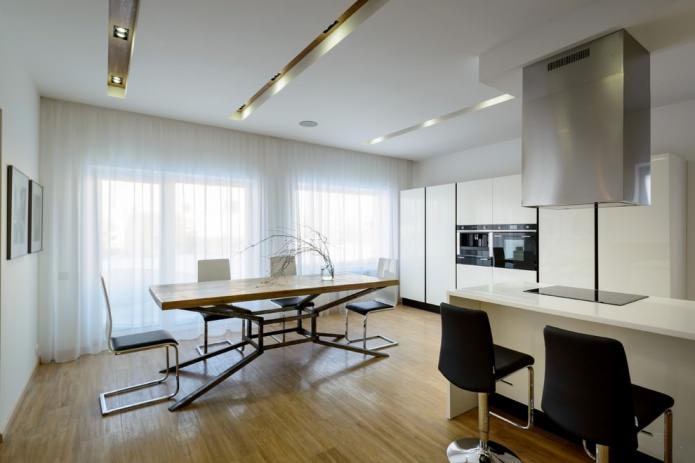
Bedroom
A spider web, tinsel, and pastel embroidery will suit the bedroom interior in green, pink, blue, beige. It can be combined with curtains and lambrequins, as well as Roman blinds, or used independently.

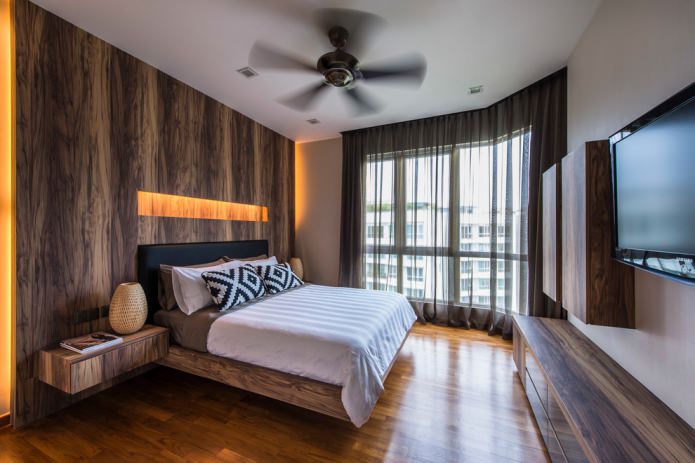
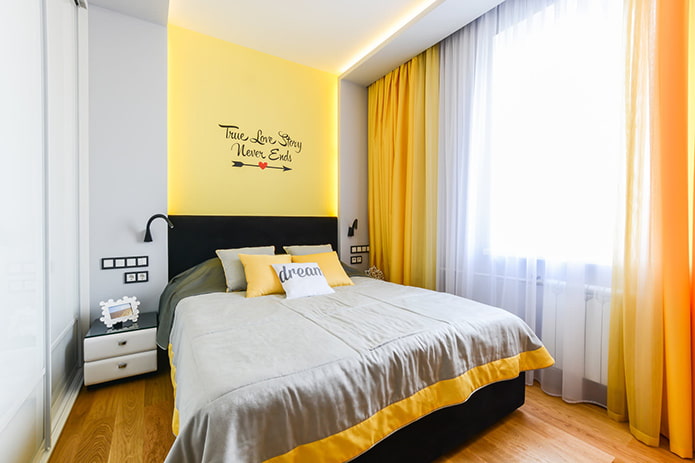
Children’s
Colored tulle or tulle with a photo print of cartoon characters is suitable for the interior of a children’s room. The length depends on the age of the baby. The room needs to be shaded for daytime sleep, so you should additionally use roller blinds or thick curtains.



Now reading:
- Modern Stretch Ceiling Designs for Bedroom (88 Photos)
- Staircase Lighting in the Interior: 58 Photos and Creative Ideas for Steps
- Beds with upholstered headboards: more than 60 photos of interiors, ideas for bedrooms and children’s rooms
- Smooth stretch ceilings: 100 ideas and photos in the interior
- Your Complete Guide to Buying a Used Skoda Yeti